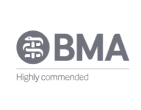Identifying foods that trigger headaches
It is not commonly known that certain foods and dietary habits can trigger migraines and other headaches. As such, your patients may be unaware that the foods they are eating, or their eating habits, may be the cause of their pain.
Informing them of the foods and dietary habits that are associated with headaches should become part of your management routine. If your patient does experience food-related headaches, keep in mind that food triggers will vary from patient to patient.
It is also possible that certain foods in isolation will not provoke a headache, but when coupled with other triggers or stressors, a headache will result. For instance, eating a trigger food when a patient is already experiencing stress may increase the likelihood of getting a headache.
Some foods that commonly trigger headaches include:
- Aged cheeses
- Yogurt
- Chocolate
- Cured meats and smoked fish
- Food preservatives (e.g., nitrates, nitrites, MSG, sweeteners)
- Certain vegetables (e.g., onions, pea pods, some beans, sauerkraut)
- Alcohol (particularly beer and wine)
- Yeast extracts and baked goods made with yeast
- Certain fruits (e.g., citrus, dried fruits, raspberries, red plums, papayas, passion fruit, figs, dates, avocados)
Become a great clinician with our video courses and workshops
How to use an elimination diet to identify foods that trigger headaches
When trying to determine which foods may trigger a headache, patients shouldn’t experiment with their diet if they’re already experiencing other risk factors such as stress. Doing so will make it more difficult to identify if it was food, stress, or exhaustion that caused a headache attack.
So, how can you determine if there are certain foods which trigger headaches in your patient? Consider asking your patient to participate in an elimination diet.
In an elimination diet, the patient cuts out foods and drinks that are known to trigger migraines, then slowly adds them back, one by one. If the patient’s headaches return, it may have been caused by the reintroduction of a certain food.
If your patient is aware of foods which can be problematic, they can watch for a headache after consuming these trigger foods. In the same way, if they skip meals, they might become aware of a relationship between food intake and headache occurrence.
Using a headache diary to uncover dietary habits that may trigger headaches
There are dietary triggers that are unreliable, even deceptive. For instance, some dietary triggers may sometimes help headaches, but at other times may trigger a headache. Caffeine is one such trigger. Your patient may notice that caffeine helps them get rid of a headache but increasing caffeine intake may lead to an increase in headaches.
In this case, it might be useful to look more deeply into factors leading to the increase of caffeine. Perhaps your patient increased the amount of caffeine they consumed to overcome fatigue? This kind of information can be obtained from an observant patient using a headache diary.
A headache diary can help your patients discover and explore the relationships between certain foods, their dietary habits, and the appearance of headaches.
When your patient maintains a diary, and you review it with them diligently, you can discover a lot about their possible migraine causes and triggers.
That’s it for now. If you want to improve your understanding of key concepts in medicine, and improve your clinical skills, make sure to register for a free trial account, which will give you access to free videos and downloads. We’ll help you make the right decisions for yourself and your patients.
Recommended reading
- Migraine Buddies App. https://app.migrainebuddy.com/
- Rizzoli, P and Mullally, WJ. 2018. Headache. Am J Med. 131: 17–24. PMID: 28939471
- Turner, DP, Jchtay, I, Lebowitz, A, et al. 2018. Perceived migraine triggers. Practical Neurology. 17: 37–41. https://practicalneurology.com
- Young, WB, 2018. The stigma of migraine. Practical Neurology. 17: 23–26. https://practicalneurology.com
- Young, WB, Silberstein, SD, Nahas, SJ, et al. 2011. Jefferson Headache Manual. New York: Demos Medical Publishing.
Become an expert



